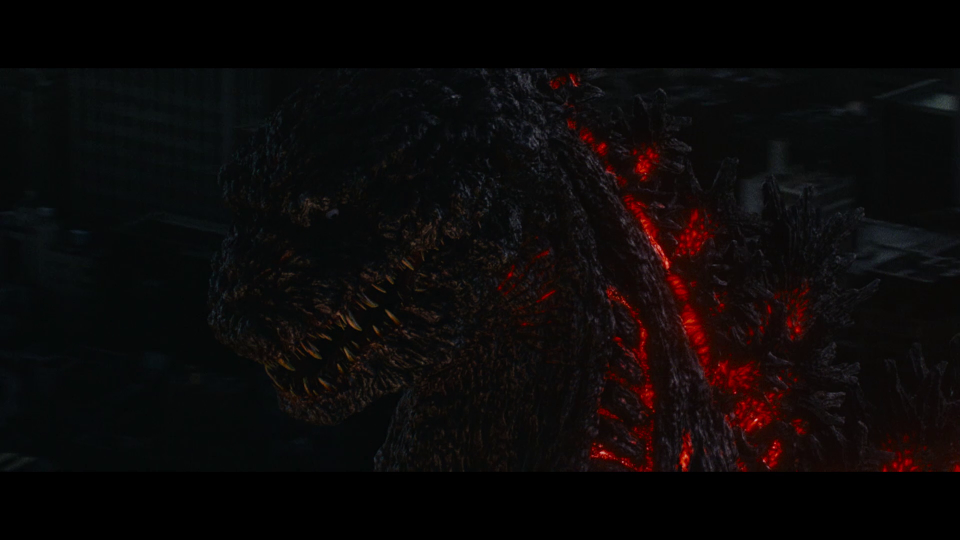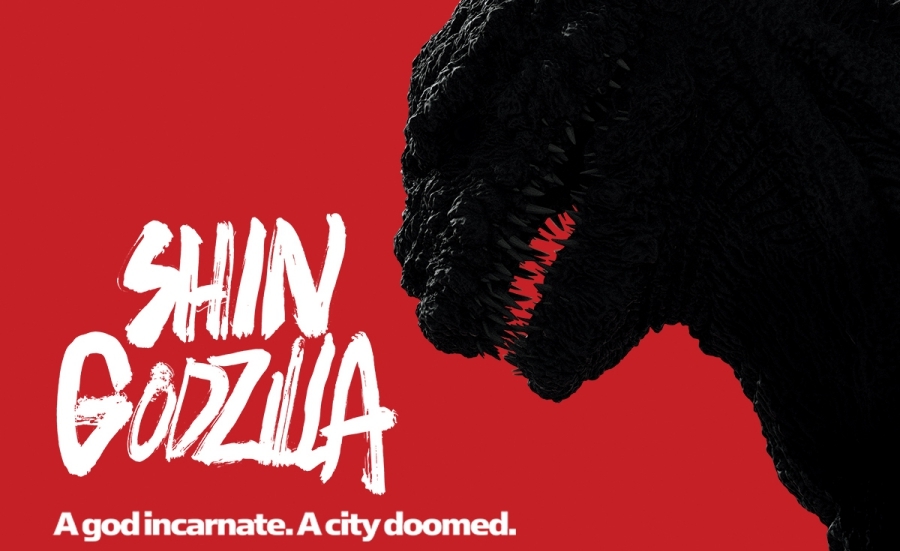From Hideaki Anno (Neon Genesis Evangelion) and Shinji Higuchi (Attack on Titan) comes Shin Godzilla, also known as Godzilla Resurgence here in the West. This is the 29th Godzilla film produced by Toho Co. Ltd and is a modern reboot of the Godzilla franchise that draws many classic elements from the original 1954 film. Already the highest grossing live action film in Japan for 2016, does it continue to build on the success of previous Toho Godzilla movies or is the new origin story a complete reboot like the Nolan Batman trilogy?
With the core plot based on the first Gorjira film, the story is modern day Japan encountering a kaiju for the first time. The film takes a strong realistic approach to the unrealistic appearance of a giant monster by closely following a young government official, Deputy Chief Cabinet Secretary Rando Yaguchi. Soon after the appearance of the kaiju, Yaguchi is appointed to create a research team, where he recruits “lone wolves, nerds, troublemakers, outcasts, academic heretics, and general pains-in-the-bureaucracy.” It is up to Yaguchi and his team to discover the weakness of Godzilla and to come up with a plan to defeat it when the Japanese Self Defense Forces (JSDF) cannot defeat Godzilla with their military attacks.
Unlike most Godzilla films including the Legendary Pictures 2014 version, Godzilla is the only kaiju this time around. For Godzilla fans, all the nostalgic Toho elements are there. Returning are the classic roar, the familiar theme song, and the mass destruction of Tokyo. The new elements do much to update Godzilla and hopefully start a new era of Godzilla films. There is a new origin story that still involves nuclear power. Godzilla is no longer a man in a suit, but a nightmarish, terrifying CGI kaiju based on motion capture from actor Mansai Nomura. Those familiar with Hiedaki Anno's Evangelion series won't be surprised to see that there are deeper lessons to take away from Shin Godzilla. The use of Godzilla as an allegory of the dangers of nuclear power is visually made clear with imagery that evokes the Fukushima Daini Nuclear Power Plant disaster and 2011 Tohoku earthquake and tsunami. There is a heavy emphasis on the inaction and the bureaucracy of the Japanese government which is criticized explicitly by Yaguchi. There are also nods to the Evangelion series throughout the film. The most obvious references are when composer Shiro Sagisu (also from Evangelion) uses a remix of "Decisive Battle", and the choreography of the JSDF engaging with Godzilla feels eerily similar to the choreography of Evangelion’s fictional Japanese Strategic Self Defense Force (JSSDF) engaging with Angels. No doubt fans will create side by side comparisons when the DVD/Blu-ray is released.

For the casual movie goer, they may have a difficult time keeping up during dialogue heavy sections where subtitles are occasionally imposed on the original Japanese subtitles. Also for all its dialogue, very little of it is spent developing any of the characters beyond their desperate desire to stop Godzilla. Another flaw in the film is once Godzilla hits the big screen, the human segments quickly begin to feel like fillers until our titular kaiju starts rampaging again. Like its predecessors, the film suffers from a lack of interesting human characters, but it was never about them. Hideaki Anno and Shinji Higuchi didn’t forget that the focus and star is Godzilla. Unafraid to use tried and true fundamentals from both the Godzilla and Evangelion franchises, the co-directors combined a new CGI model with modern day Japan to create a Godzilla flick that is both fresh for newcomers and welcoming to lifelong fans.

PROS:
-A new Godzilla design
-Fantastic camera work
-The realism of a government/military response
CONS:
-Too much dialogue
-Not enough time spent on individual characters

